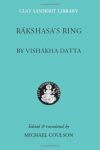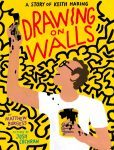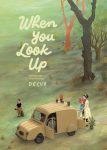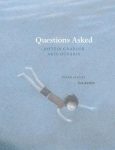 Temptation
Temptation
by János Székely (Mark Baczoni, trans.)
NYRB Classics
Taking place mainly during the 1920s during Miklós Horthy’s proto-fascist rule of Hungary, Temptation is a coming-of-age story told by Béla, born into deep poverty. Dickensian in its wide cast of characters from rich to poor, child to adult, country and city, honesty and corruption, triumphs and setbacks, love and anger, Temptation is a long but fast-paced story, cinematic in its descriptions and pacing—imagine a brash rags-to-riches film from Hollywood in its B&W heyday (but one that would take 12 hours to watch)—including songs and music! Each section of the novel builds to a climax leading to the next—Székely knows how to tell a story, simultaneously building momentum and character development.
From his horrible beginnings in home run by a reformed prostitute—a “home” that crosses prison with orphanage and abusive foster care—Béla, works hard to achieve a simple dream of merely being able to go to school and study. As he grows older, he makes one modification to his dream, which is to emigrate to the U.S. to study. All Béla really wants—his dreams is so simple—is to study and rise in rank and income as a reward for this years of persistence, his fealty to the dream.
Blocking him—or at least making his journey more difficult—is the rampant corruption permeating every level of Hungarian society. Job entry—when jobs are to be had—is more a matter of connections (in exchange for favors or money) than talent, and losing them is, well, not much anybody without power can prevent. (In one subplot, a woman in Béla’s apartment building is so thrilled that her husband is about to finish his apprenticeship program—which suggest full journeyman status, pay increase, and job security—that she starts shopping for a baby carriage before she’s even pregnant. But then, disaster: rather than promote her husband and give him a raise, the company fires him so they can replace him with less experienced apprentices.)
Late in the book when Béla, now 17, is mulling over his fate, which has placed him in a bad, bad situation, he realizes he must change his path if he expects to live:
All you knew—and that only in moments such as this—was that it was all connected. That every screw, wheel and spring served the Work, with merciless efficiency. That every screw had its place, ever star had its orbit, and that you—yes, you too—had your own place and trajectory, like the stars, and fish and the plants, or the bird up on the rooftop that does nothing but sing and then fall down dead. You came for some purpose, you were sent to do something, and now you’re standing there in the world like a small child their parents have sent next door with a message who, by the time they arrive, have forgotten why they were sent in the first place.
I should have expressed something. I should have expressed something!
There it was, in my heart, and I aborted it, like poor women did their babies. It was a simple poem, a fractured peasant poem, but it was my poem, and I should have been the one to write it. It might have been clumsy, and certainly wasn’t clever, but it came from the soil like the wheat I’d reaped and reached for the sky like everything that grows out of the earth. . .
Go, sing your poem, you wretch, and leave at least something fine behind you, a line that might echo for a while, like the organ after mass when the priest has long since fallen silent.
Much of the book has parallels to societal conditions existing today in the U.S.—an overwhelmingly corrupt government with fascist pretentions, a nationwide police force that is barely under control and which wreaks havoc in the lives of detested minorities, rampant and increasing unemployment, and no job or health security for most people. But one significant difference that has occurred in the century since the actions described in the book: There is no longer a better country to escape to.
Mark Baczoni’s translation is excellent overall, but his use of British idioms is sometimes jarring and anachronistic.
 Rákshasa’s Ring
Rákshasa’s Ring
by Vishákhadatta (Michael Coulson, trans.)
Clay Sanskrit Library / NYU Press
Rákshasa’s Ring is a play from 6th century CE India on political intrigue that that occurred 900 years previously, with the establishment of the Maurayan dyanasty. (Don’t worry: You don’t have to be up on Indian history to understand and enjoy this work.) The main character, a real person, Kautílya, wrote the Arthashastra, a treatise on how to run a government that anticipates Machiavelli’s The Prince by a thousand years. It’s hard to call him the “protagonist” of this play since, by Western standards, his actions don’t count as “good”—but neither are they wholely “evil”—which gives this work its unsettling edge.
Rákshasa’s Ring includes spies, double-agents, double-dealings, and a plot twist as damning as Othello’s “evidence” against Desdemona, all translated into idiomatic English (with facing Sanskrit text in transliteration). The author, Vishákhadatta, was born into Indian royalty (at a minor level), and his familiarity with court intrigues shows.
The action begins shortly after Chandra Gupta has deposed the Nanda family and established himself as the new Emperor. Chandra Gupta’s top minister, Kautílya, seeks to convince the Nanda family’s loyal top minister, Rákshasa, to serve under rather than oppose Chandra Gupta. After Kautílya succeeds in setting up half of Rákshasa’s allies for “crimes” that lead to their execution and the arrest of Rákshasa himself, Kautílya is at the point he can make an offer Rákshasa can’t refuse—and that will allow Kautílya to retire from politics.
 Drawing on Walls: A Story of Keith Haring
Drawing on Walls: A Story of Keith Haring
by Matthew Burgess (text) and Josh Cochran (pictures)
Enchanted Lion Books
Drawing on Walls is a beautiful introduction to Keith Haring’s life and art. Matthew Burgess’s text captures the seemingly inexhaustible energy and joy for life that possessed Haring from the beginning of his life, and Josh Cochran’s illustrations convey that energy and joy without mimicking Haring’s style. (Moral of the story: Anybody can be cool like Keith Haring without being Keith Haring.) Throughout the book, Burgess and Cochran emphasize Haring’s love of children, several community projects he worked on with children, and the joy he took in bringing happiness to people of all ages.
The Haring shown here is independent, generous, inventive, playful, thoughtful, and intelligent: somebody you really wish was on your list of close friends. Credit is given to Haring’s father, who introduced Keith to the line and its possibilities when Keith was still a little kid. Keith then taught the same skills to the three sisters who followed his birth. There is certainly enough here to pique the interest of any child (or adult) who would like to learn more about Haring and see more of his works.
Matthew Burgess discusses book and leads a Haring-like drawing exercise for kids: https://www.youtube.com/watch?v=-9Kwbhq12X0
 When You Look Up
When You Look Up
by Decur (Chloe Garcia Roberts, trans.)
Enchanted Lion Books
A young boy, Lorenzo, and his mother move to a home in an isolated, rural area. Despondent that “now all my friends will only exist inside my cellphone,” and already used to an online life that is suddenly now ending, the sense of isolation Lorenzo feels is compounded by the lack of furniture in the house. However, there is a large, mysterious object in Lorenzo’s new bedroom, which turns out to be something called a “roll-top desk.” Lorenzo asks his mother for the purpose of all of its slots, and its many small, medium, and large drawers.
She tells him that, once upon a time, people used to write letters, which required paper, ink, stamps, and sometimes other materials. His interest piqued, Lorenzo explores the desk more and discovers a hidden cabinet with a notebook inside filled with stories that Lorenzo doesn’t quite understand, but is fascinated by, and soon begins noticing parallels between the imaginary life of the notebook and his own, real experiences. (By this time, he’s forgotten about his cellphone.)
The stories Lorenzo reads are presented as a combination of drawn lines and paper cut-outs, which further fuel his imagination of the possibilities of combining lines, shapes, and colors in ways that tell stories. Without going into spoiler-alert territory, suffice it to say that one day Lorenzo meets the author of the tales.
The story and illustrations are both excellent, as is Decur’s weaving of reality and imagination that strongly conveys the excitement of discovery and creation. Highly recommended.
video of Decur working: https://vimeo.com/398952149
on Chloe Garcia Roberts: https://www.chloegarciaroberts.com/
 Questions Asked
Questions Asked
by Jostein Gaarder (text; Don Bartlett, trans.) and Akin Düzakin (illustrations)
Elsewhere Editions
An emotionally complex but short book for kids who are starting to ask big questions about the meaning of life, how we can know what we claim to know, the afterlife, friendship, and so on. The text and the images are each on separate pages. The questions by themselves don’t necessarily imply the pictures shown, which may be the real story that prompts the questions—the “real story” being the death of a friend, or even a twin. The distinction seems deliberately blurred, and that feels right: the cataclysm that throws everything into question, including the value and point of one’s own life after the loss of a dear one.
The book is somber but life affirming. The questions aren’t answered but the answers seem up to the reader, who must set forth—alone at times—on a life quest to find out—or create them.
Youtube video showing contents of book: https://www.youtube.com/watch?v=atPLqCuJwwY
 Feather
Feather
by Cao Wenxuan (text; Chloe Garcia Roberts, trans.) and Roger Mello (illustrations)
Elsewhere Editions
An updated version of Are You My Mother?—a book about identity and belonging, this time told by a Chinese writer (Cao) and illustrated by a Brazilian (Mello). In this story, Feather discovers herself alone and tries to find the bird she belongs with. Along the way, Feather meets birds ranging from haughty to murderous (one bird eats another). When Feather finally finds her mother and siblings, she also discovers the beauty of humbleness and community.
Roger Mello’s illustrations depict a range beauty, eccentricity, and whimsy in bird forms. For the book’s climax, the format of the book page widens as the sudden drama deepens. (The wider pages are hidden and kept in place by a flap from the back cover.)
NY Times article on Cao: https://www.nytimes.com/2016/05/02/arts/international/profile-cao-wenxuan-hans-christian-andersen-award-winner.html
Interview with Mello: https://www.publico.pt/2016/06/18/sociedade/noticia/a-leitura-nao-tem-a-mesma-receita-para-todos-alerta-o-escritor-roger-mello-1735551
